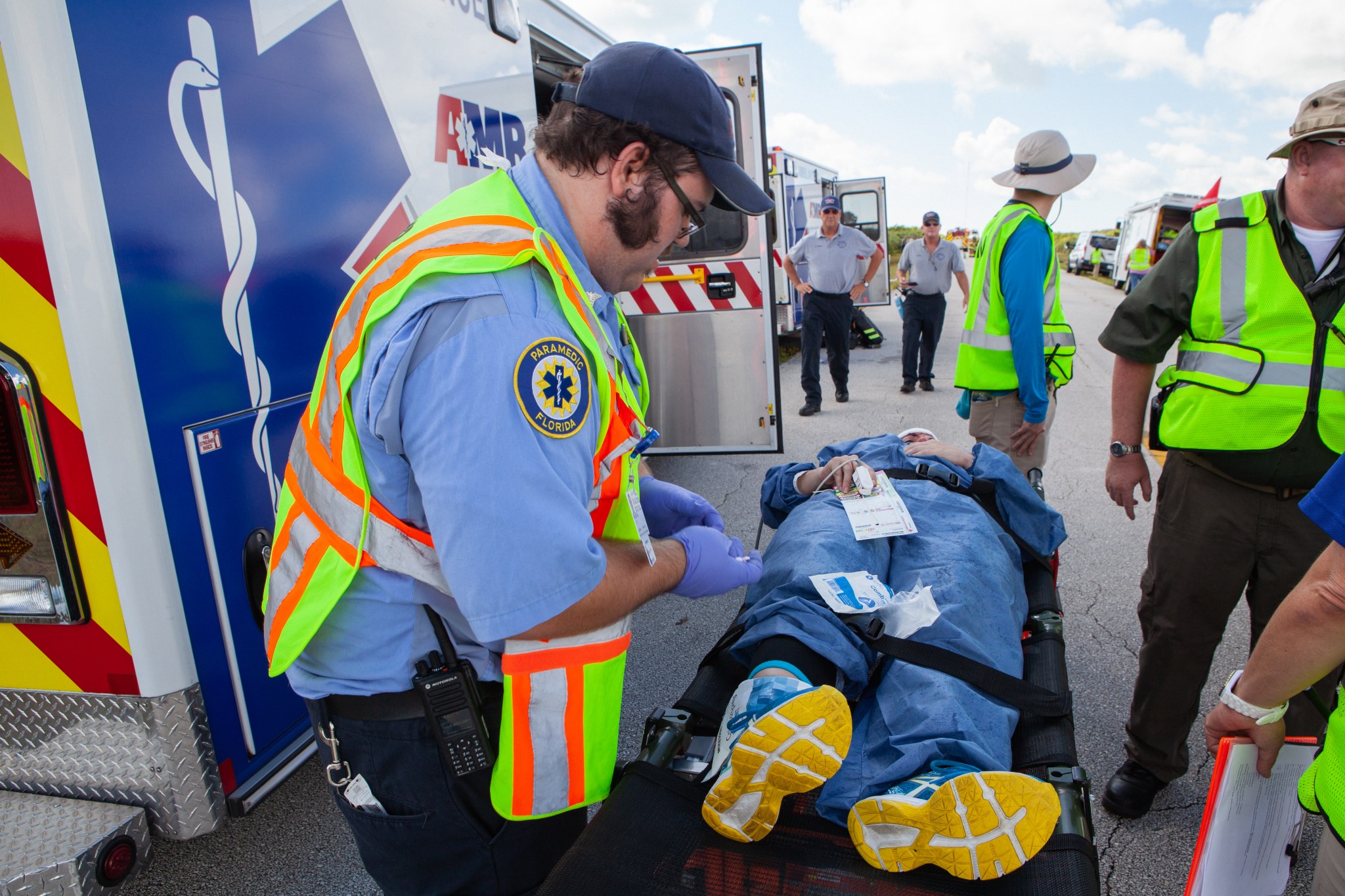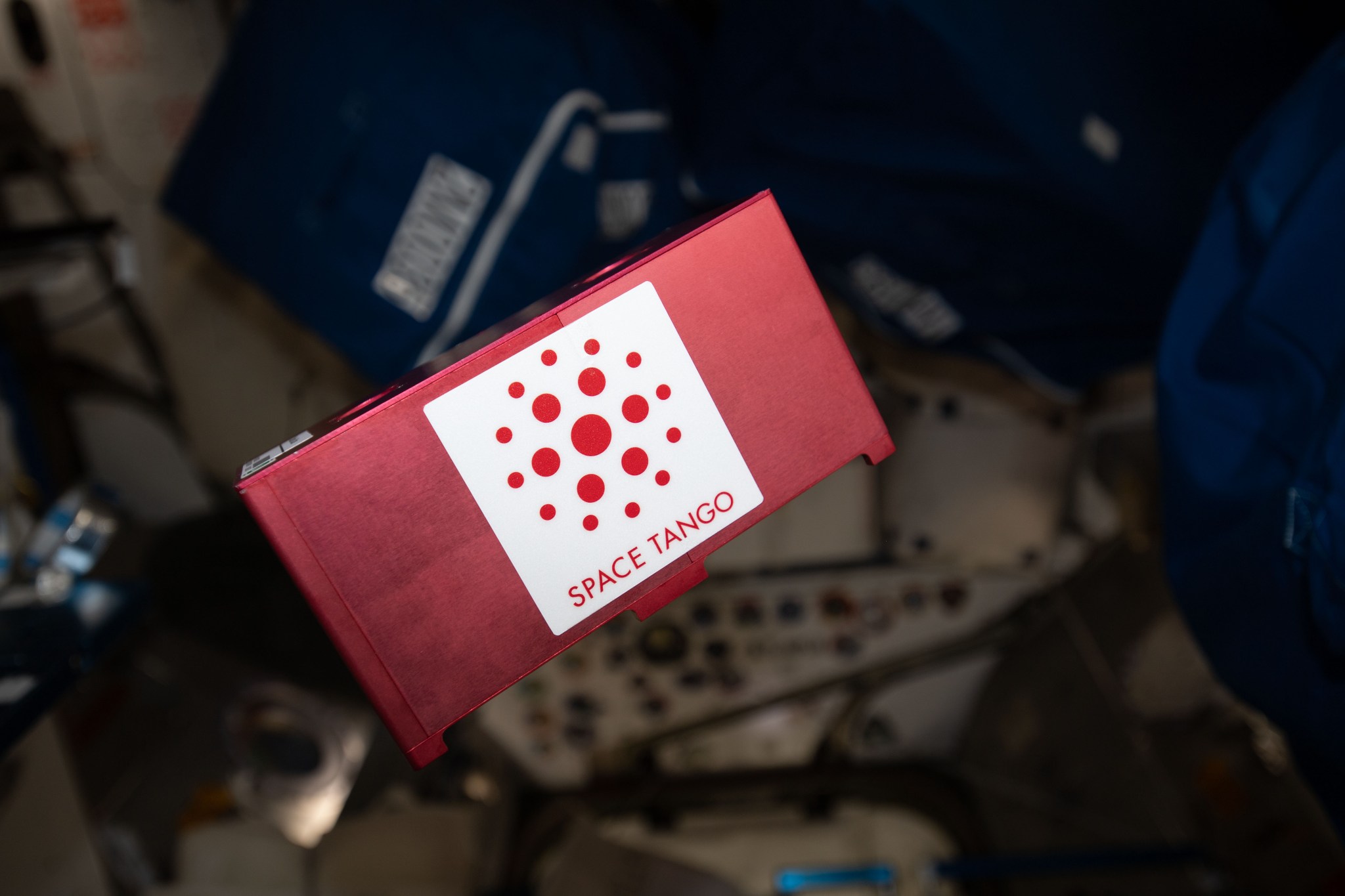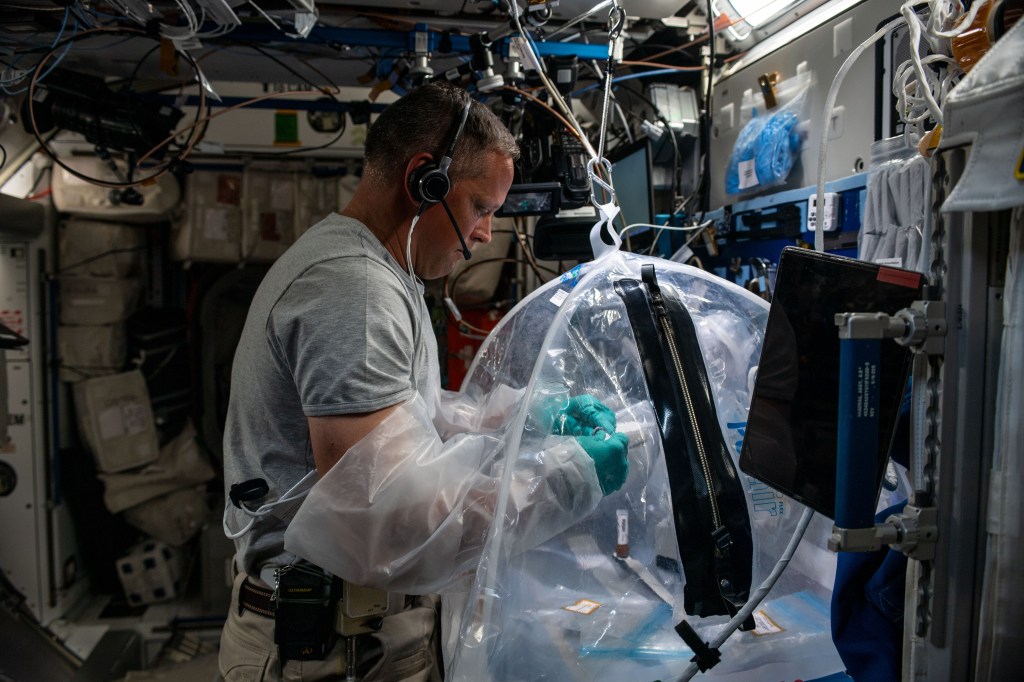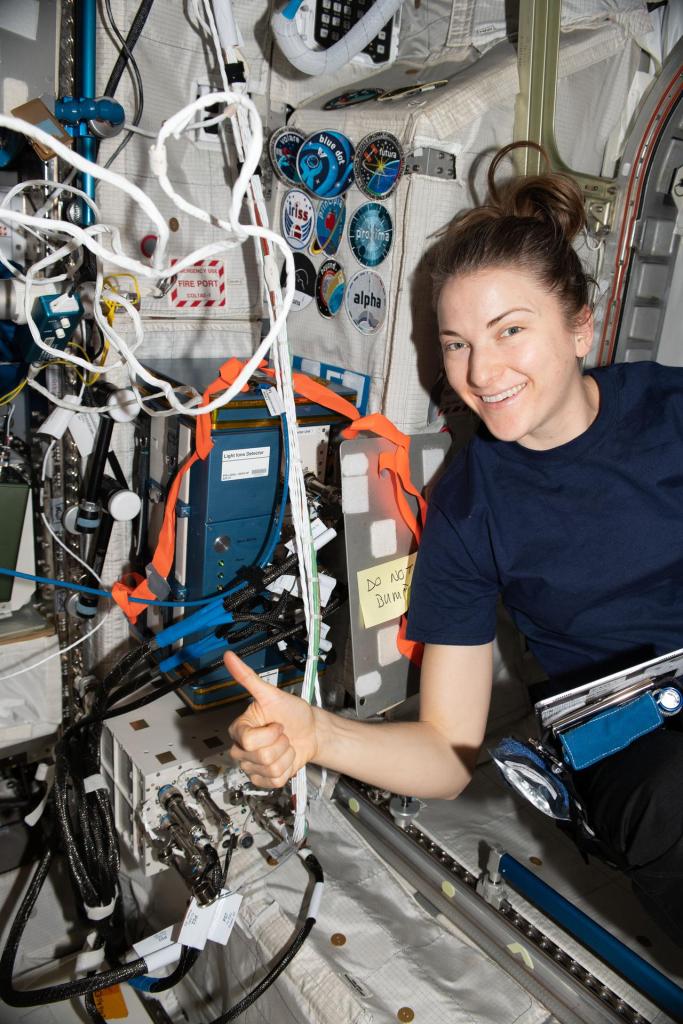Medical & Pharmacology

Introduction
Johnson Space Center (JSC) provides specialized primary medical care for astronauts and biomedical engineering support for all human spaceflight mission operations including protocols, contingency plans, crew health standards, and training. With a comprehensive range of services, including clinical and space occupational medicine, behavioral health, and medical and behavioral selection and certification for flight, JSC plays a vital role in ensuring astronaut well-being. With expertise in space medicine, spaceflight epidemiology and surveillance, and spaceflight pharmacy, JSC teams monitor, assess and provide protection solutions for current and former astronauts.
JSC’s expertise extends to exploration medical systems, offering a unique blend of knowledge in particle/helio-physics, space radiation science, big data analysis, and information technology, enabling the integrated testing of medical human-system interfaces and human performance. JSC specialists support the development of advanced medical systems for commercial and military applications, including new capabilities for commercial crew flights, novel space mission endeavors, terrestrial populations in extreme environments, and ocean vessel operations. Medical informatics, hardware development, biostatistics, clinical risk modeling, and telemedicine showcase JSC’s unparalleled capabilities, reflecting its commitment to advancing medical science and technology for space exploration. This wealth of knowledge and experience positions JSC as a world leader in human spaceflight, and we invite our partners to leverage our capabilities to advance their own spaceflight endeavors.
Operational Space Medicine
Space Medicine Operations
Overview | JSC provides specialized primary medical care for astronauts and expert medical and biomedical engineering support for all human spaceflight mission operations. JSC space medicine performs medical and behavioral selection and certification for flight, as well as surveillance care for former astronauts supported by the JSC spaceflight pharmacy and the wealth of data held by its spaceflight epidemiology group.
Details |
- Clinical and Space Occupational Medicine
- Behavioral Health and Performance
- Medical and Behavioral astronaut Selection and Certification for Flight
- Hyper and Hypobaric Medicine
- Biomedical Engineering/biomedical Flight controllers
- Space Medicine Subject Matter Expertise
- Astronaut Strength, Conditioning, and Rehabilitation
- Missions Operations and Product Development for Medical Operations
- Space Radiation Analysis
- Spaceflight Epidemiology and Surveillance
- Spaceflight Pharmacy
Baseline Data Collection Facility
Overview | The Baseline Data Collection Facility (BDCF) provides space for International Space Station (ISS) International Partner investigators to set up and execute pre- and post-flight data collection and testing locally at Johnson Space Center. All investigation hardware is provided by the investigation teams.
Details |
- The Baseline Data Collection Facility (BDCF)
- Biologic samples refrigerator
- Blood draw station
- Building is access controlled
- JSC network access
- Floor space available for data collection activities
Environmental Chemistry Laboratory
Overview | The Environmental Chemistry Laboratory (ECL) has extensive experience analyzing environmental samples from crewed spacecraft and interpreting the results to ensure compliance with applicable standards. The ECL has the expertise to develop custom analytical methods to deal with complex sample matrices (wastewaters, preserved urines, urine brines) and to overcome the inherent challenges associated with spacecraft environmental monitoring (limited sample volumes, non-ideal storage conditions, etc.). The lab also works to identify and evaluate new environmental monitoring hardware, establishes monitoring requirements for new crewed spaceflight programs, and provides operational support for on-orbit monitoring and environmental control systems.
Details |
- Comprehensive analysis of air, water, and wastewater samples
- Interpretation of environmental data
- Development of custom analytical methods to overcome challenges created by complex matrices, limited sample volume, and unique/non-standard analyses
Exploration-Class Medical Capabilities
Overview | Our unique exploration medical systems expertise and capabilities complement our space medical standards knowledge to optimize crew health, fitness and well-being, as well as technologies, for integrated testing of medical human-system interfaces and human performance resulting in system concepts and mission operations. Extreme Environment Medical Capabilities including expertise, skills, and knowledge are available to support development of advanced medical systems and operations for both commercial and military applications.
Details |
- Development of new medical capabilities for commercial crew flights
- Novel space mission endeavors such as an orbiting commercial platform
- Terrestrial populations working and living in extreme or austere environments
- Ocean vessel and facility operations to optimize human health and performance in dangerous environments
Applied Injury Biomechanics
Overview | The NASA Applied Injury Biomechanics (AIB) team primarily focuses on keeping astronauts safe during dynamic phases of spaceflight and extravehicular activities (EVAs). Dynamic phases include launch, ascent, abort, on-orbit maneuvers, re-entry, descent, and landing. Lunar and other planetary missions also would require that safety measures be taken during descending to and ascending from a planetary surface. The AIB team has helped develop standards for vehicle designers that limit the loads and accelerations that crew members can be exposed to throughout a mission. Because time in space causes changes to astronauts’ bodies, the standards account for this by reducing exposure limits at the end of a mission. AIB also conducts research on potential injury risks during suited operations, including EVAs and training. This work involves developing models and instrumentation techniques to characterize and monitor human movement and forces in the suit to understand injury risks and study potential mitigations.
Details |
- Performs applied injury biomechanics assessments related to launch, landing, and suited operations
- Performs physical acceleration testing
- Develops advanced modeling tools tailored for occupant protection in the context of the various vehicles and suits
Flight Research Laboratories
Bone and Mineral Laboratory
Overview | Bone and Mineral Laboratory (BML) personnel support ground-based and flight research to characterize the effects of real or simulated spaceflight on the musculoskeletal system and to evaluate the efficacy of countermeasures.
Details |
- Performs dual-energy X-ray absorptiometry (DXA) bone scans on astronauts in support of medical requirements including pre- and post-flight scans on ISS astronauts
- Scans performed every 3 years on all members of the Astronaut Corps
- DXA scans are performed on a triennial basis for all retired astronauts, if feasible, as part of the Lifetime Surveillance of Astronaut Health
- Provides guidance in the development of astronaut medical standards and in the physiologic interpretation of data on bone and muscle loss
- Supports musculoskeletal evaluations for both on-site research studies and collaborative studies with extramural institutions
- Oversee specific protocols for data collection by quantitative computed tomography for the analysis of volumetric bone density in both cortical and trabecular bone compartments
- Performs DXA scans providing assessment of percent lean mass and body fat
- Oversees data collection by magnetic resonance imaging for analysis of muscle mass and volume and bone microarchitecture
- Evaluates skeletal health and countermeasures efficacy as informed by clinical policymakers in the bone and mineral field
- Tailor imaging protocols for specific clinical and research needs
Cardiovascular and Vision Laboratory
Overview | Members of the Cardiovascular and Vision Laboratory (CVL) at NASA Johnson Space Center conduct spaceflight and ground-based spaceflight analog research to understand the cardiovascular and ocular changes that occur during spaceflight, investigate the mechanisms of these adaptations, and develop countermeasures when necessary. The CVL includes experts in spaceflight associated neuro-ocular syndrome (SANS) and have led and/or participated in all research associated the strict head-down tilt bed rest model as a spaceflight analog of SANS since it was established in 2017. The CVL also has extensive experience implementing human physiological assessments during parabolic flight. Laboratory personnel also routinely support medical testing of astronauts for the Space Medicine Clinic and testing that assists in the selection of new astronaut candidates.
Details |
- Develop and evaluate countermeasures, including fluid loading, compression garments, veno-occlusive thigh cuff, and lower body negative pressure (LBNP)
- Comprehensive ultrasound and echocardiography imaging capabilities for cardiac, vascular and ocular targets in space and on Earth
- Acquisition and analysis of ocular variables including optical coherence tomography (OCT) images to assess ocular structure; OCT angiography to assess ocular vasculature; intraocular pressure; retinal function via dynamic vessel analysis; ocular function via Humphrey Visual Fields and electroretinography
- Test assessments of cardiovascular and spaceflight associated neuro-ocular syndrome physiological outcomes
- Evaluation of cardiovascular and spaceflight associated neuro-ocular syndrome related hardware or software for spaceflight
- Develop, test and validate operational countermeasures for supporting cardiovascular function
- Develop prototype flight hardware and microgravity compatible protocols
Neuroscience Laboratory
Overview | The Neuroscience Laboratory investigates the effects of spaceflight on the human nervous system, with particular emphasis on sensorimotor function involving changes in posture and gait function, eye-head coordination, spatial disorientation, space motion sickness, and vestibular-autonomic function. The central focus of the laboratory is both to characterize the risks to performance of critical operational tasks and the development of countermeasures to mitigate the space flight-related changes in nervous system function associated with g-state transitions. The laboratory supports ground-based research on a variety of platforms and in-flight investigations, including crew health monitoring, risk mitigation operational activities and countermeasures evaluation and validation research.
Details |
- Provide recommendations for concept of operations and countermeasures for mitigating risks associated with spatial disorientation, motion sickness, and capsule egress
- Support sensorimotor research using space-flight analogs and inflight experiments across a variety of space vehicle platforms
- Applied task assessments in the field (i.e. at landing sites)
- Conduct training for astronauts and mission support personnel to anticipate impacts of deconditioning during and/or following G-transitions
- Conduct crew health monitoring related to neurological function and recovery, including specialized testing of neurovestibular function
- Develop sensorimotor training tools and rehabilitation for clinical use during recovery
Immunology and Virology Laboratory
Overview | The Immunology and Virology Laboratory is responsible for investigating the effects of spaceflight on various aspects of human physiology.
Details |
The Immunology and Virology Laboratory’s Primary Areas of Research
- Investigating the adverse effects of spaceflight on the human immune system
- Monitoring the reactivation of latent herpesviruses as a biomarker for immune suppression
- Using terrestrial ground analogs and modeled microgravity cell culture technology to determine the mechanistic causes for reduced immune cell function during spaceflight
Lab Expert Provisioning
- Perform flow cytometry, MagPix array (immune and protein arrays), polymerase chain reaction, analysis, electron, confocal and fluorescent microscopy, cell culture (2D and 3D bioreactor), cell infection models, host-pathogen interactions, molecular analysis
- Develop prototype flight hardware and microgravity compatible protocols
- Evaluate and develop biomedical countermeasures
Microbiology Laboratory
Overview | Microbiology Laboratory personnel at the Johnson Space Center are concerned with microbiological issues associated with crew health and the integrity of the spacecraft and its systems. The laboratory is comprised of an integrated team of environmental microbiologists, industrial microbiologists, molecular microbiologists, medical technologists, mycologists, and biosafety professionals, who advance spaceflight operations, basic and applied research, and technology development.
Details | The Microbiology Laboratory is a biosafety level 2 facility accredited by The American Industrial Hygiene Association and the National Environmental Laboratory Accreditation Program.
- Classical bacteriology and mycology, advanced molecular sequencing techniques, and host-pathogen interaction studies
- Collect microbial analysis of environmental samples (air, water and surface) and spaceflight food
- Develop microbial contamination standards and requirements
- Perform custom microbial testing
- Develop prototype flight hardware and microgravity compatible protocols for molecular sequencing (i.e., MinION)
Bioanalytical Core Laboratory
Overview | The Bioanalytical Core Laboratory (BCL) is a multi-function facility dedicated to supplement and augment research capabilities at NASA Johnson Space Center. This collaborative space utilizes mobile and fixed laboratory casework and a wide range of instrumentation to remain flexible and adaptive to the needs of scientists and a diverse group of research partners. In addition, dedicated spaces are devoted to specific functions such as specialized microscopy, tissue culture, flight hardware development, mass spectroscopy, and more. The BCL boasts a wide range of instrumentation which is available to scientists, collaborators, and other external researchers.
Details |
- Available to assist with equipment training, experimental design, and troubleshooting
- Provide training and use of specialized microscopic, bioanalytical, and laboratory equipment
- Provide a skilled senior scientist to assist with analysis and experiment development as needed
- Provide general biology and molecular bench space
- Provide access to Biosafety Level 2 tissue culture workroom
- Perform conventional 2-D cell culture and 3-D tissue engineering in a variety of bioreactors
- Provide Biomedical Basics training to crew, teaching mammalian tissue culture, microscopy, and techniques to support biological payloads on the International Space Station (ISS)
Pharmacology
Pharmacotherapeutics Laboratory
Overview | Pharmacotherapeutics Laboratory’s capabilities include access to expertise in pharmaceutical, toxicology, regulatory sciences and research, investigational and clinical pharmacy consultation, dosage form design, delivery, and performance, and pharmaceutical stability analyses and assessments. The Pharmacotherapeutics Laboratory also offers access to a variety of analytical workspace and state-of-the-art equipment options including environmentally controlled drug storage chambers, liquid chromatography systems (HPLC, UPLC), Mass Spectrometers, Friability and Hardness Testers, and a variety of other laboratory supplies and bench-top equipment.
Details |
- Provide clinical pharmacy services
- Provide therapeutic drug monitoring
- Provide regulatory and compliance oversight
- Provide clinical trial protocol development, execution, and oversight
- Perform pharmaceutical dosage form design and storage
- Perform pharmaceutical stability assessment and design


































